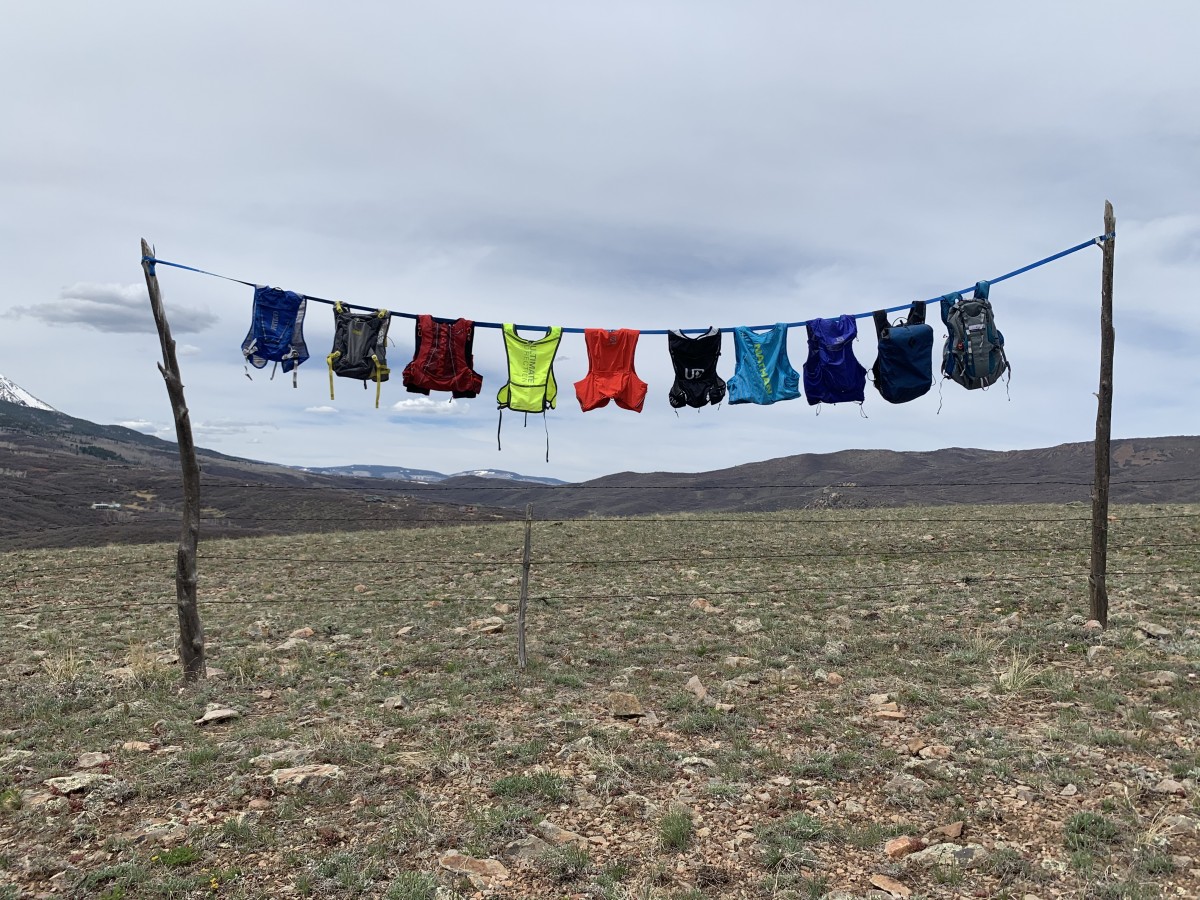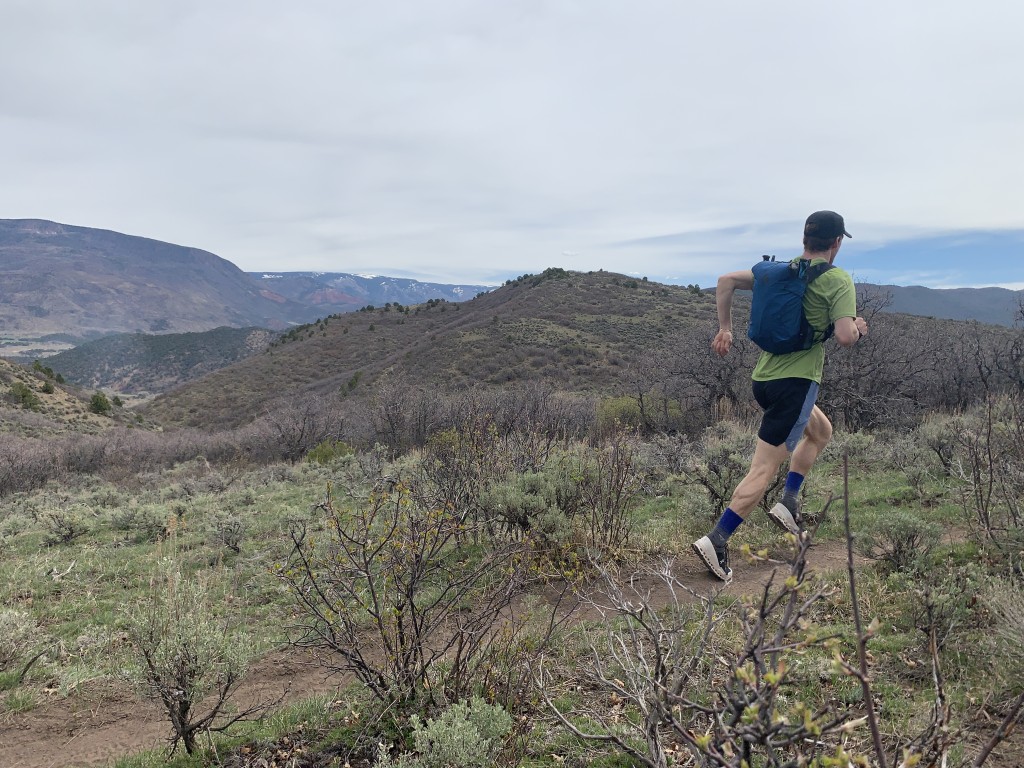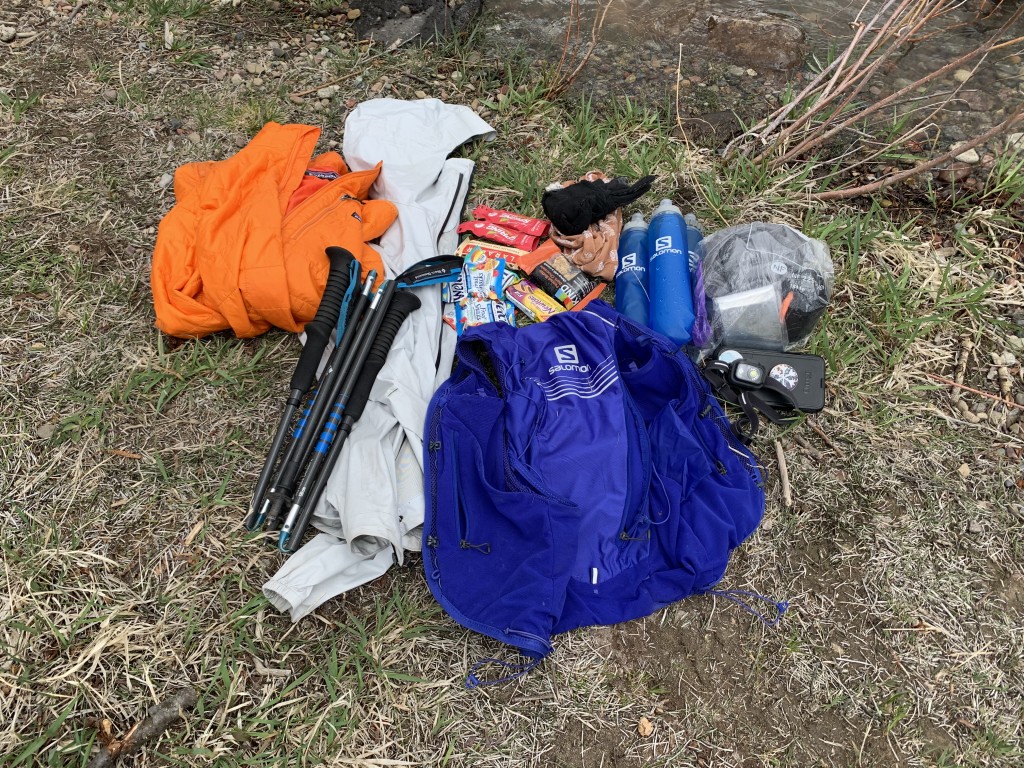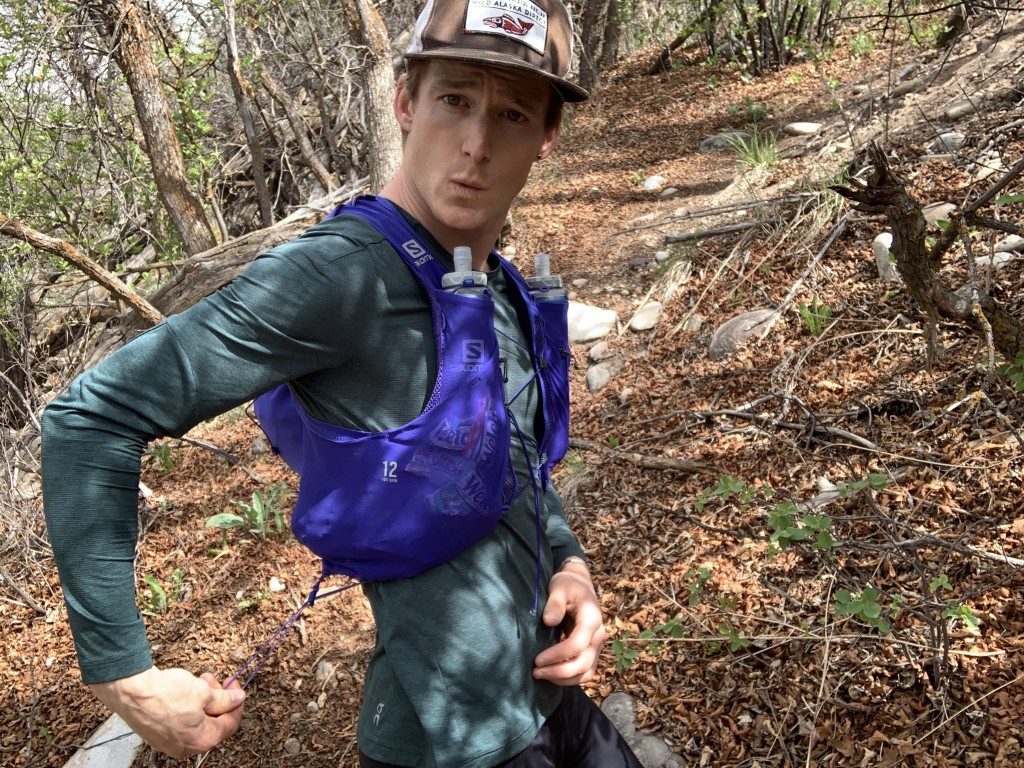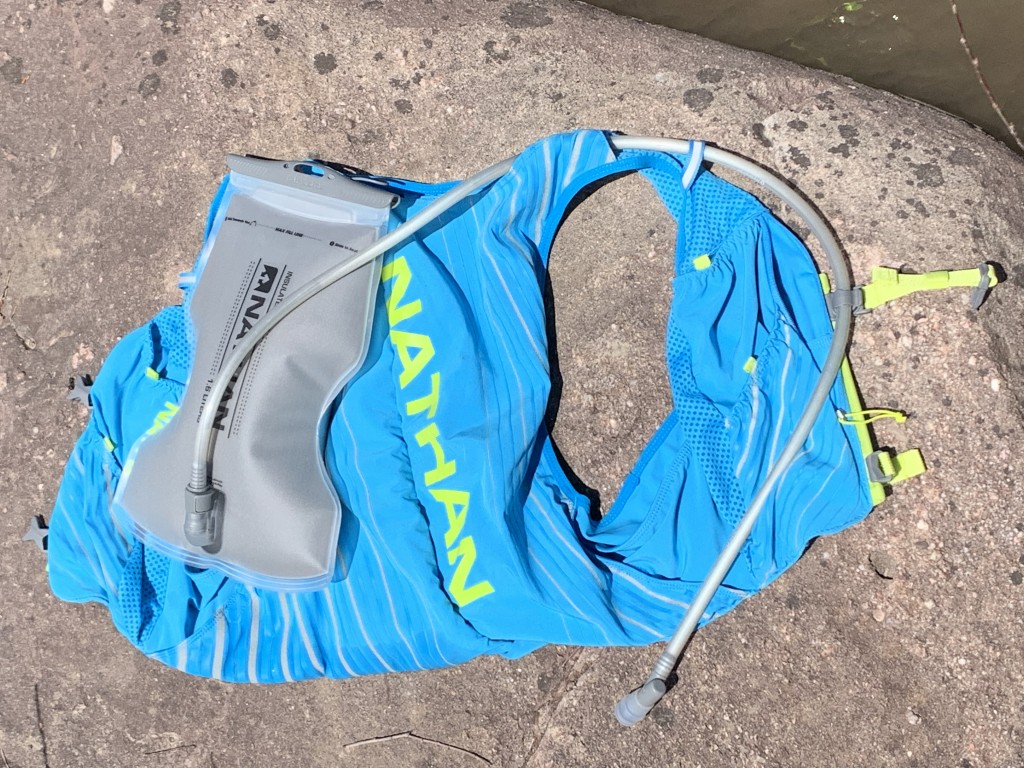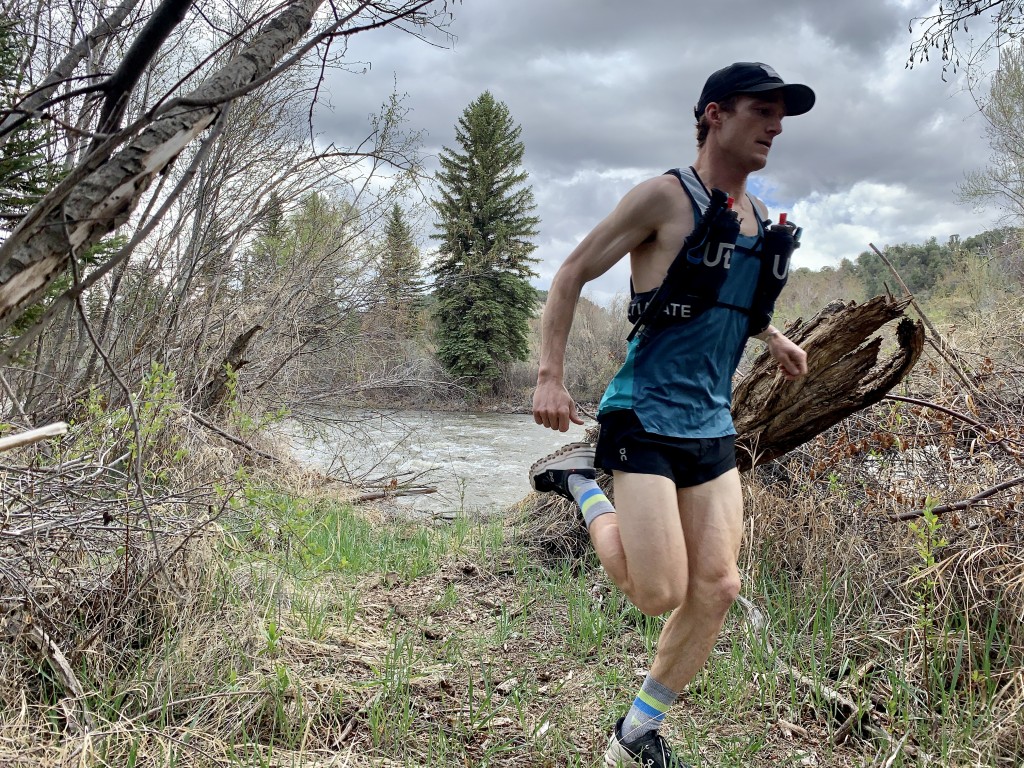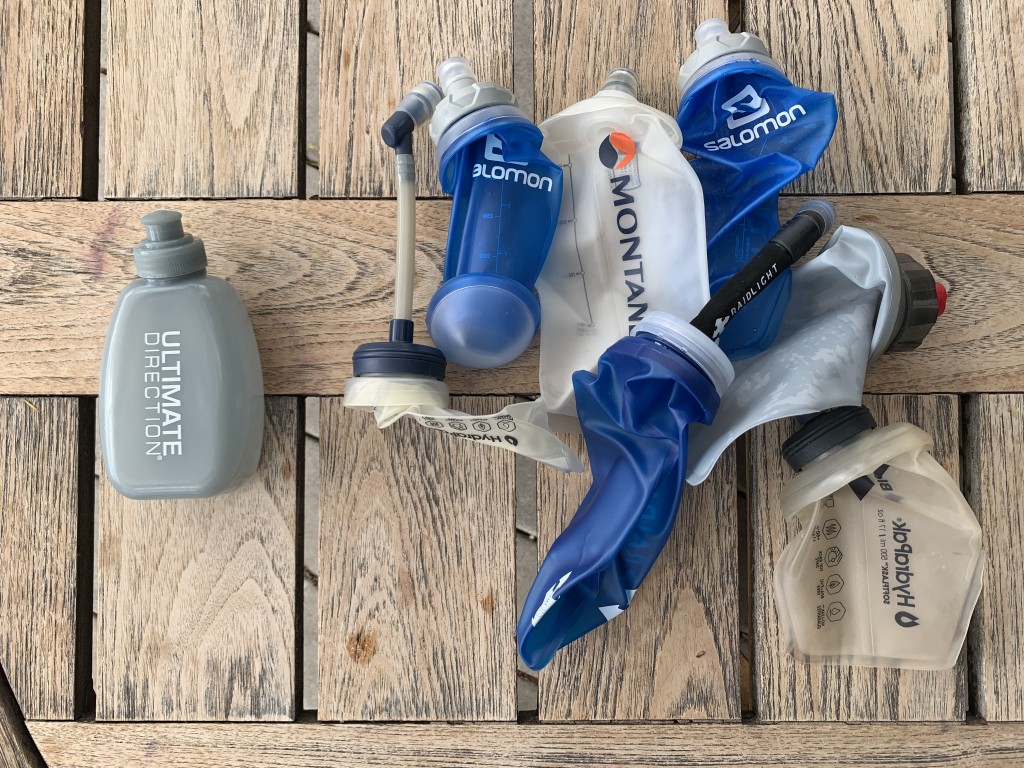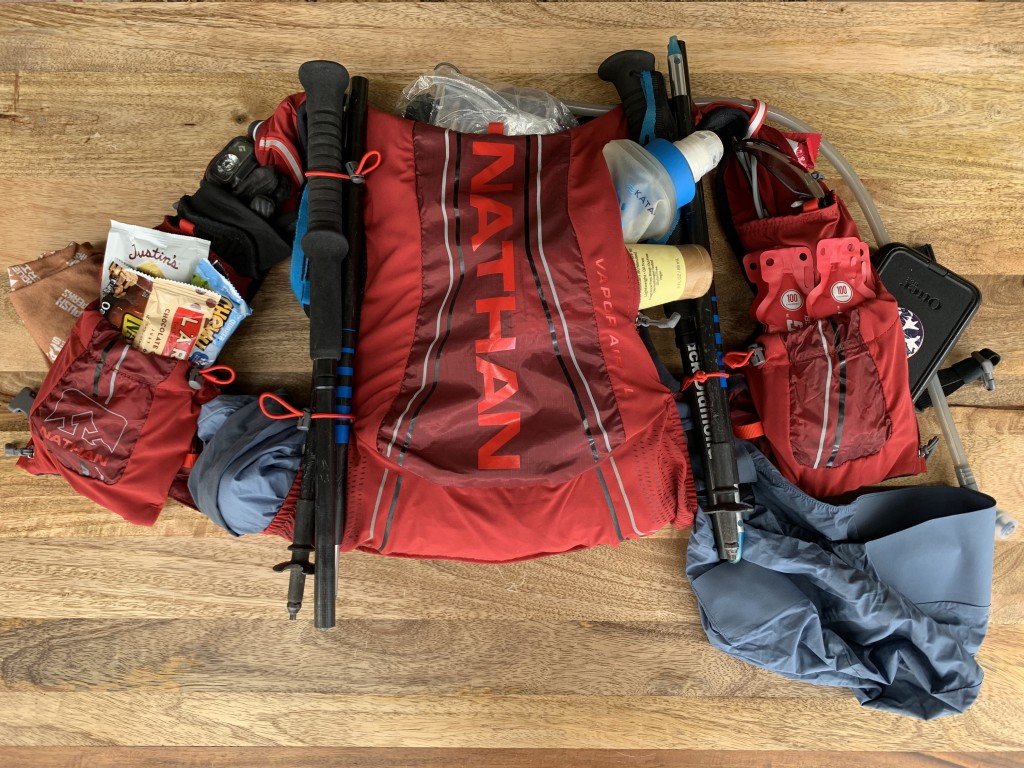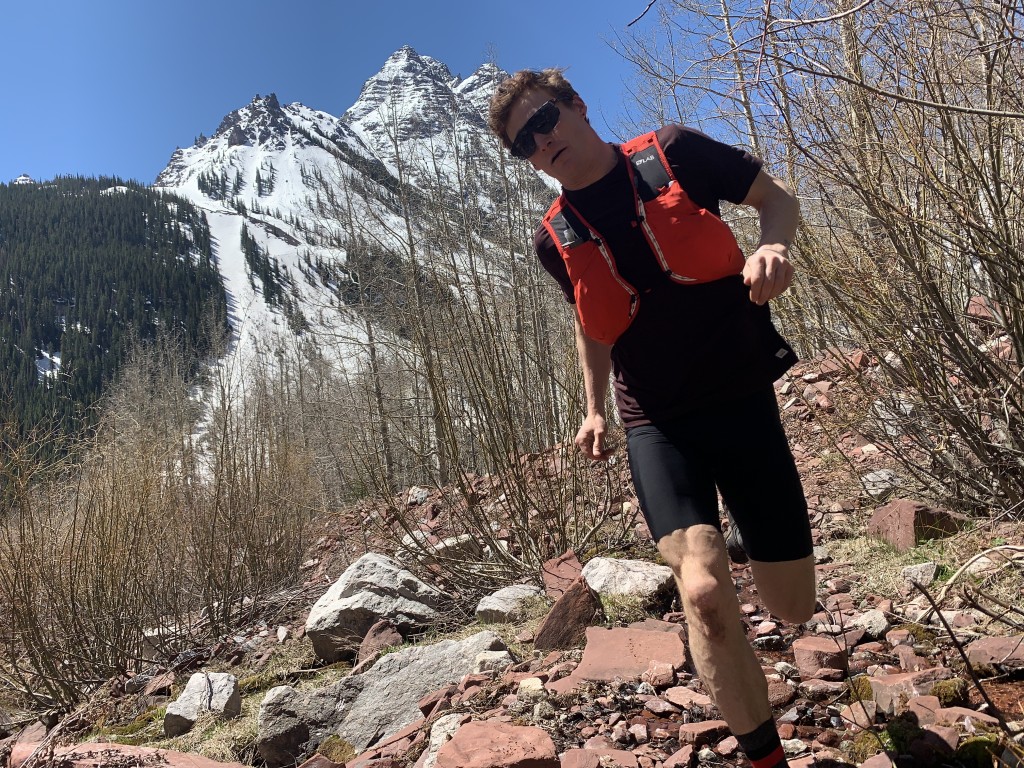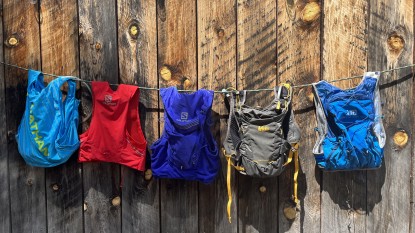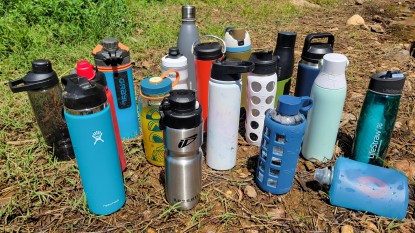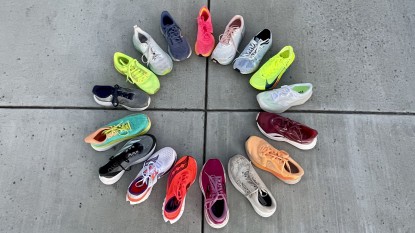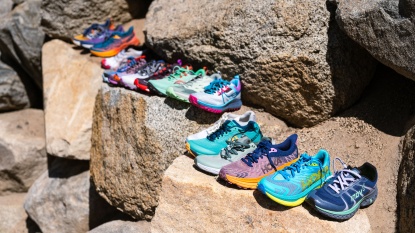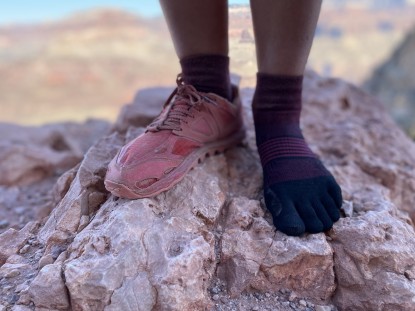If you've found yourself here, you're likely looking for the best way to carry your water, gear, and food for long-distance running missions. There are many running hydration packs on the market, and it can be hard to know what to look for. We examined the best packs available, identifying important features and constructions within each design. Here, we explain the ins and outs of running packs and how you can find the one best suited for your needs.
What is a Running Hydration Pack?
Also known as a running vest, a hydration pack for running carries water, food, and emergency essentials that you can't leave behind on a long run. They are designed specifically for long trail runs, adventure runs, or races where a simple handheld water bottle and a gel or two will not suffice. Hydration packs that carry a higher volume of gear are sometimes considered for fastpacking as well because the aim is to have access to all of your needs while on the move. Hydration packs for running differ from backpacks in this way — you shouldn't have to take them off to access your gear. To comfortably carry water while running, these models have a form-fitting design, or suspension, that helps keep the pack in place during the inherent bouncing involved in each stride. Running vests typically have dual chest straps to secure them in place and do not have waist belts. They are also designed to be sleek and lightweight because if you're running in the mountains for 20 miles, the last thing you want is to be slowed down by a heavy pack or unnecessary bulk. Well-designed hydration vests have pockets on the chest straps or sides to store food and accessories within easy reach without needing to take the whole pack off, while also a larger storage pocket on the back for gear like a first aid kit that is smart to have, but you hopefully don't have to use. We also added a few hydration belts to our review. These offer many of the same capabilities as a vest but with less total storage. They're great options for light and fast routes when your gear requirements are lower.
Intended Use
While some packs may fit different body shapes better than others, in this review, we selected the size recommended for our body type, yet there are many different shapes and sizes of packs. The field is muddied with dozens of products claiming to be the lightest, easiest to use, and most comfortable. It's important to determine exactly what you'll be using your pack for so that you can decide which metrics you care most about. Our advice is rooted in extensive testing, and we position ourselves in as many use-case scenarios as possible. While there are many packs out there, and you'll likely find more than one pack that works well for you and your intended mission, we distill the options down to the packs with the greatest universal reach when it comes to performance.
If you plan to be out on the trail for more than two hours, you should consider carrying a hydration pack for running in lieu of just a handheld water bottle and a snack. Many other factors might play into the decision of when to have a pack, but this is a safe rule to abide by. We love getting out for longer-run adventures, but the further out we venture, the more imperative it is that we carry the correct gear. Running vests are the appropriate tool for the job as they aren't too bulky, and they are designed to move with your body, eliminating swing weight or sway. Figuring out where you will spend most of your time running is key to selecting the right running vest. If you spend 90 percent of your time running short, ten-mile, or less trail runs or supported events with frequent resupply options, something light, efficient, and affordable might do the job without adding many superfluous features. If you spend more than 20 percent of your time out in the mountains running without support, it's critical to get a pack that will haul required equipment comfortably with room to spare. If your pack is maxed out, it will detract heavily from your comfort and won't allow you to deviate from your usual outings by adding more equipment.
More than likely, you fit into the category that our testers fit into. You get out on trails, run in the city, and occasionally go for big mountain adventures that your family always assumes you will die on and asks, “Is this a good decision?”, “Where exactly are you going again?”, and our favorite, “Hey, did you know someone was just attacked by a mountain lion there?” If this sounds like you and your overprotective family, getting a running pack that can comfortably accommodate all types of adventures might be a good avenue.
Comfort
Running for extended periods can be uncomfortable. A bouncy, poor-fitting, and improperly packed running vest will only exacerbate that discomfort. We place the most emphasis on comfort for this reason, ahead of features and hydration systems. If your pack isn't comfortable, you're not going to wear it, and thus, the type of hydration system won't matter. There are several factors to consider when assessing the needed comfort of a running pack.
Ease of Fit Adjustment
Throughout your run, you will consume your food and water and use supplies contained within your running vest. As these vests are snug and designed to minimize bounce as you run, having the ability to quickly and easily adjust the vest as things come out or go in is critical. You don't want to spend ten minutes adjusting things when you're out on a run. The best packs in our lineup offer three points of adjustment, making them ideal for long days out.
One Size Fits All?
There's no substitute for actually trying on a vest. This will let you determine if it will adjust and contour properly to your body. If you are ordering a vest, make sure the provided fit chart lines up with your proportions, as an ill-fitting running vest can be a bigger hindrance than a help. Many of the one-size-fits-all running vests sit high on the chest and have fewer fit adjustments. While these are some of the most comfortable vests for our testers, they have the potential to be ill-fitting for some people. There are more and more vests on the market with at least two sizes available, which can further complicate the process — make sure to examine fit guideline charts closely before you buy.
Similarly, with some belts, sizing is extremely important. If you get the size wrong, the belt will bounce.
Suspension
As you run, there will be some bounce with any vest. Long story short, two particular designs seem to provide the best suspension and minimize excessive bounce. Flank straps with an equalized V system seem to work quite well, as do vests made with stretch fabric that hugs the entire body. A simple adjustable buckle on some webbing won't cut it and will cut into your ribcage or restrict your diaphragm when you might be breathing heavily.
Breathability
Another critical aspect of comfort is the breathability of the setup. The best breathability will be from a belt; there is no material covering your chest or back, just a small section around your waist. Today's hydration packs are leagues better than their predecessors and create a union between form and function. For example, many use a lightweight mesh for the shoulder straps and back panels. While this doesn't eliminate the sweat problem, it sure does help. Some models use a “micro monofilament” material as an ultra-breathable mesh for straps on the sides and shoulders. Some of our favorite vests are made almost entirely of mesh, making them extremely comfortable and breathable. The downside of all this breathability is even a light rain shower will permeate the pack. Thus, those packs designed for longer missions, fastpacking, or mountain scrambles in inclement weather incorporate waterproof ripstop materials and elect to use breathable materials elsewhere. Depending on your interests, look for packs that use materials that increase breathability — you'll thank yourself later.
Hydration System
The pioneers of hydration bladders, CamelBak and the MSR Dromedary, were onto something. If we could carry water on our backs, we could travel for much, much longer. In the last decade, that concept has been rethought to make an array of hydration systems designed specifically for running. Water is now commonly stored on the runner's back and chest, and there is a huge selection of hydration systems. For the most part, these fit into three categories: bladder or reservoir on the back, form-fitting soft flasks on the chest, and ergonomically designed hard bottles on the chest or back.
Hydration Bladder
This is the big daddy. If you're heading out for a beatdown in the mountains (or flat trails, too!) and don't have many watering holes available, this is probably the option you want. Advantages include having up to two liters of water available at the start, conforming to your back, taking up very little space when empty, padding from a mountain lion attack (eek!), and ease of use (though all types of hydration systems we used were pretty easy). The capacity is really the highlight of a hydration bladder (also often called a reservoir), and packs designed to incorporate them typically don't become as loose and sloppy when the bladder is empty. This is because the shape of the pack across the back is independent of the volume of water in the bladder, an often-overlooked advantage of bladder designs vs. chest mount soft flask systems that typically fit dramatically differently when the flasks are empty or full.
There are disadvantages, too: having a big bag of water on your back puts an imbalance of weight in the back of the vest/pack and can add to bounce or discomfort if the vest isn't designed to offset the load. The other glaring downside of the hydration bladder is managing the hose. Often, this has to be fed through a small channel over the shoulder and clipped onto the chest straps of the pack. While there are some clever solutions out there (we are usually fans of magnetic clips), you will inevitably fiddle with the hose and be frustrated with it at some point. This is usually a small price to pay for a massive reservoir of hydration at your fingertips.
Soft Flasks
Over the past few years, this has become “ultra” popular. Get it? Because ultra-marathons. It makes sense; you have soft, squeezable bottles holstered in chest pockets right next to your mouth. They are easy enough to fill and the least annoying to drink out of, as you hopefully don't have to remove them from the pockets. Some soft flasks have extended nozzles on straws to position the water closer to your face for easier access. Having two smaller flasks also allows you to have different beverages in each pouch, such as plain water on one side and an electrolyte nutrition drink on the other.
One frustration with soft flasks comes from the aforementioned change in fit between a vest carrying full soft flasks and empty soft flasks. Additionally, when you try to stuff refilled bottles back into the chest pockets. This is heightened when there are snacks or gloves in adjacent pockets, making it all the harder to slide the noodly soft flask into place. While some vests are a bit easier than others, none of them are great. Again, it's a small price to pay for the ease and convenience of having those soft flasks well-positioned to deliver high-quality H2O.
We tested soft flasks from various brands and found that proprietary designs specific to the vest or belt itself tend to work best, don't leak, and are the easiest to thread the tops onto. While soft flasks sometimes leave us wanting a bit more capacity, it's an easy solution to order a spare and store it in an accessible flank or back pocket. If you're in an event or scenario that provides good resupply options, soft flasks are probably the way to go. They're simple, offer you the ability to have different liquids in each, ride well, and because they are small and conform to your body, they don't bounce much.
Hard Bottles
While this may seem like something of a holdover from a past littered with hard plastic bottles, there is a place for hard bottles, and some runners prefer them. If you don't want to run with a bladder but don't like how soft flasks can dramatically change the fit of a hydration vest when they empty, hard bottles may be for you. We didn't mind using them much, but they are significantly less comfortable than both soft flasks and hydration bladders, even with a more ergonomic-friendly fit design.
One huge bonus is how much easier it is to fill something that can stand up on its own. There are times when it feels like filling a hydration bladder requires three hands. A dual hard bottle design also gives you different hydration options, like the soft flasks. There is one standout situation where these bottles would be a good choice over the soft flasks, and that's when durability counts. If you're running self-supported through terrain likely to rip and poke at you with briars and branches, the soft flasks could rip.
Adaptability
While there are many specialist running vests or packs, there are also quite a few out there that offer some variability in what you can haul along as far as hydration, equipment, and food. The vests that boast an “expandable” water capacity often come with soft or hard flasks in chest pockets and have a sleeve in the back capable of holding a 1.5-2 liter hydration bladder. Vests with this capacity tended to be our favorite for several reasons.
These vests have a better capability to haul both light and heavier loads, and ultimately, at max capacity, we could load up with three liters of water at the beginning of our day. Yes, this is heavy starting out, but it gives you more range before needing to fill up, which is a critical consideration at elevation and in arid environments. Just think of the extra weight as training weight. If you choose only to use the bladder or soft flasks in front, the extra space is always nice to hold a running jacket or a nice turkey, brie, and jam sandwich on some sourdough; now that's how to make a summit memorable.
Features, Pockets, and Weight
There are lots of extras that are going to be specific for each runner. Do you need a pocket capable of holding an iPhone X Plus? Do you run with trekking poles but need to be able to store them on the pack at certain times? Does the race you're running require a whistle or follow along roads at night when reflectivity is a necessity? Questions like this will allow you to narrow down the features that are necessary to aid you in your quest for glory.
Pockets
This seems like the most intuitive piece of the pack design, but if you can imagine trying to pull your rain shell out of your pack while descending a steep loose trail, juggling your attention between your footing and rain soaking your phone and the dry layer in your pack, the stow pocket that your rain shell lives in needs to be really easy to access. The same goes for almost all of the gear storage in your pack, from phones to snacks. While some race packs don't incorporate a phone pocket into their design, we can't ignore the fact that we often consult our phones for maps or to snap photos while on the move.
Pocket placement separates good packs from great packs, as the location of a pocket can impact comfort, as well as the ease of the pack's hydration system. We find the best pack designs have an assortment of chest pockets mounted on the shoulder straps (ideally with one zippered pocket for keys or trash) and then easily reached pockets on the flanks of the ribcage for additional snacks, gloves, a headlamp, or a hat. The main compartment on the back is often where the most creative designs come into play, as some are constructed with flexible material and meant to be within reach, and some are secure with zippers and are intended for the gear you don't intend to use but need to carry.
A word of caution: if you go all out and get a vest with literally every accessory available but don't need them, it will be cumbersome, heavy, and just unnecessary. Some packs have storage straps for helmets, ice axes, and poles. That's great if you plan to utilize them, but it can be annoying if they're just bouncing around empty. Chances are, the more volume a hydration pack for running can carry, the more material it is constructed with, and the heavier it will be, which is our final consideration. Be honest with yourself about what you will be using your vest for. There are so many options out there; trust us, you will be able to find the one that fits your running style and will complement your needs.
Volume to Weight Ratio
We tested hydration packs for running that are appropriate for runners with many different interests. To relate the weight of each pack to the volume that the pack could carry, we constructed this ratio. Simply put, we assessed how heavy the pack was and how much gear it could carry. For this metric, the higher the number, the better the score. We are confident that you will be able to distinguish between the skimpy vests intended for racing, the overbuilt vests targeted at fastpacking, and the versatile vests in between. We encourage you to use this metric to guide your decision making but remember to prioritize comfort first and foremost.
Our recommendation is to ignore the weight factor until you have narrowed your vest quest down to just a few options. Maybe, just maybe, when you are having trouble picking between a couple of different options, you can factor in the volume-to-weight ratio and save yourself a few grams.
Conclusion
First and foremost, examine the type of running adventure you partake in most often. If you head out on big mountain adventures, find a running vest with expandable hydration capacity and the ability to store sufficient equipment and food. If you are sticking to more urban environments or supported events, get an appropriately trimmed-down running vest or belt that will get you from station to station without weighing you down. Look at outlying adventures as well, and try to find a running vest that will complement your main activity and still stretch its capacity to your bigger, more adventurous days. If you have specific needs or oddly shaped gadgets, make sure the vest will be able to accommodate those as well. With about a million options on the market, there is a running vest that will seem as if it was made just for you.

